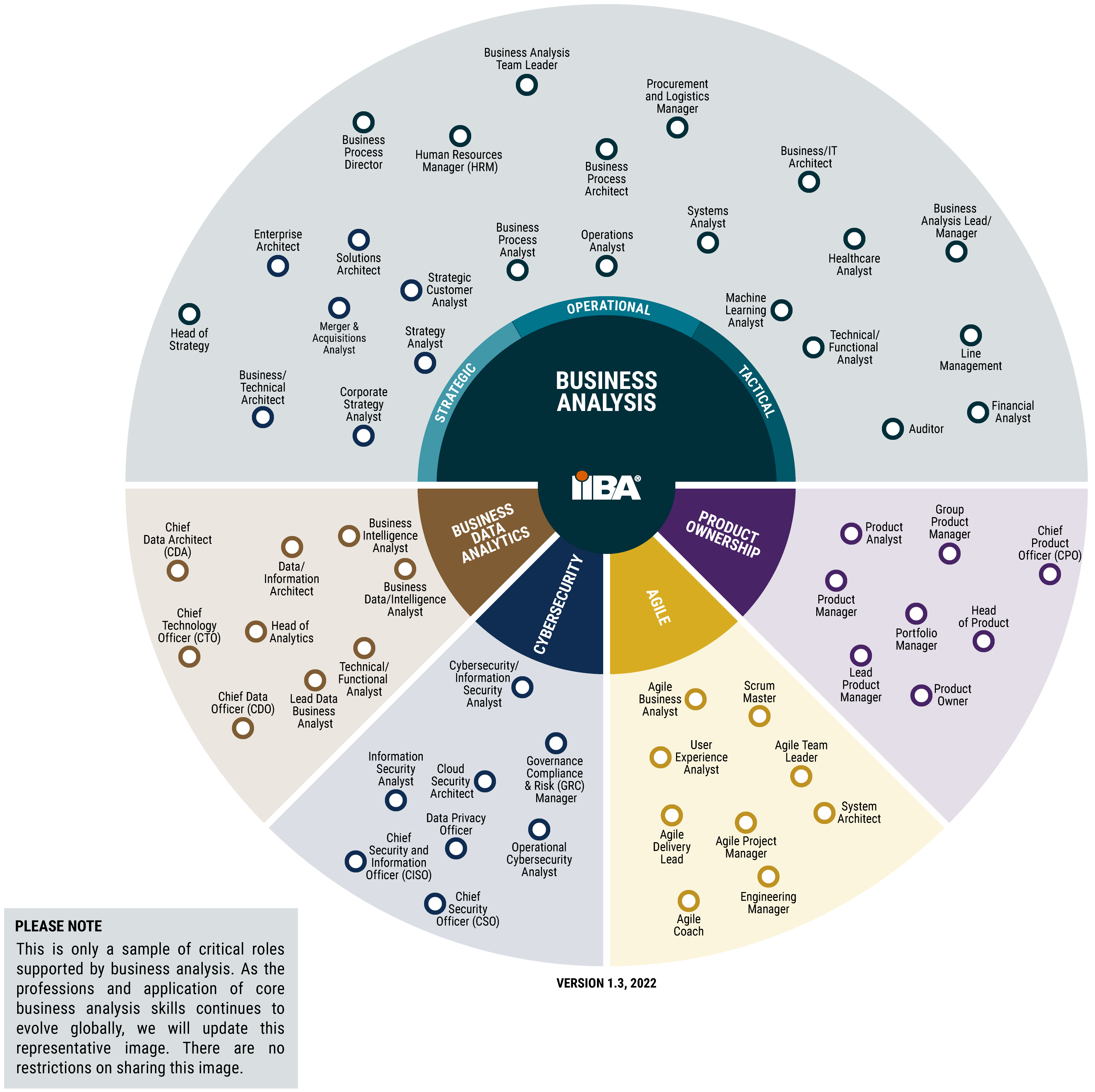Business Analysis Career Path
How to become a Business Analyst? The IIBA® Business Analyst Career Road Map outlines the business analysis opportunities available to you. The Career Road Map is designed to identify the many roles within business analysis, and show your options based on your experience today. It includes the emerging roles in business architecture and business intelligence which are in high demand.
Business Analysis Is Everywhere
Touching multiple roles and departments, effective business analysis requires digital skills, business acumen, and targeted knowledge to drive better business outcomes across all industries.

Develop Your Business Analysis Career
A career in business analysis can take you in many different directions. It's important for you to know what your options are and pursue opportunities for experience, training, and certification that will take you to where you want to go.
Business Analysis Careers Globally
The Future Of Business Analysis
The number of job profiles for all US business analysts 2.7M. Increased from 364K as indicated by IBM.
Organisations are now dependent on business analysts and project managers to guide them through this digital disruption and advise on best practice and emerging technologies. Predictive technologies such as machine learning, Artificial Intelligence and The Internet of Things can now provide industry trends and data patterns that have the power to significantly impact a business and its operations.
*Source: The Future Of Business Analysis.
20 of the most essential work skills you’ll need in 2021: Business Analysis
As more tech companies disrupt the economy, more businesses are looking to compete in the modern economy by making their businesses more efficient and taking advantage of innovative work processes. It’s up to business analysts to help companies make these changes, which is why the Bureau of Labor Statistics predicts the field will grow by 14 per cent by 2028.
*Source: 20 of the most essential work skills you’ll need in 2021
Career advancement and opportunities with CBAP Certification
CBAP Certification – Nowadays, many jobs have a clearly defined role and have a successful career path. However, the career path of the business analyst continues to differ along with position to position descriptions. The business analyst must combine business needs with IT tools as mediator, coordinator, collaborator, and ambassador.
Clear communicators, efficient coordinators, quantitative analyzers, and team players are typically good business analysts. The ideal analyst also offers the flexibility of different organizational, economic, technological, professional, and architectural roles.
*Source: Career advancement and opportunities with CBAP Certification
Business Analysis Specialization
Business analysis professionals come from many different backgrounds and fulfill different needs to deliver the best business outcome for their organization. Find the resources you need for best practices and specializations relevant to business analysis in today’s transformative world.
The Business Analysis Professional
Roles Names
Role names are not job titles. Role names represent the various tasks, techniques and knowledge needed by an individual to be successful and can be combined into one position.
For example, a Business Requirements Analyst could also have deep expertise in process; therefore, the Business Requirements Analyst and Process Analyst roles can be considered as a career path.
Another example: a Systems Analyst may be part of a software development project that utilizes the Agile method. Therefore, the Systems Analyst could hold an Intermediate Systems Analyst or Intermediate Agile Analyst role but his/her title could be Intermediate Systems Analyst.
Review the Role Descriptions to find out the responsibilities involved and the skills and knowledge needed, to help you map your career.
Business Analysis Competencies
The IIBA Business Analysis Competency Model identifies 53 performance or discipline competencies specific to the role of the business analyst. The underlying competencies represent the foundational skills, knowledge and personal characteristics necessary to support the effective performance of business analysis, and are essential for effective performance at any level of experience.
Business Analyst Self Assessment Tool
Use the thirty-question Self Assessment Tool to assess your current capabilities.
The Self-Assessment tool consists of a series of statements and corresponding experience and performance indicators that determine your overall competency.
Become a Member to Access the Tool
Already an IIBA Member?
IIBA Members Login to Access